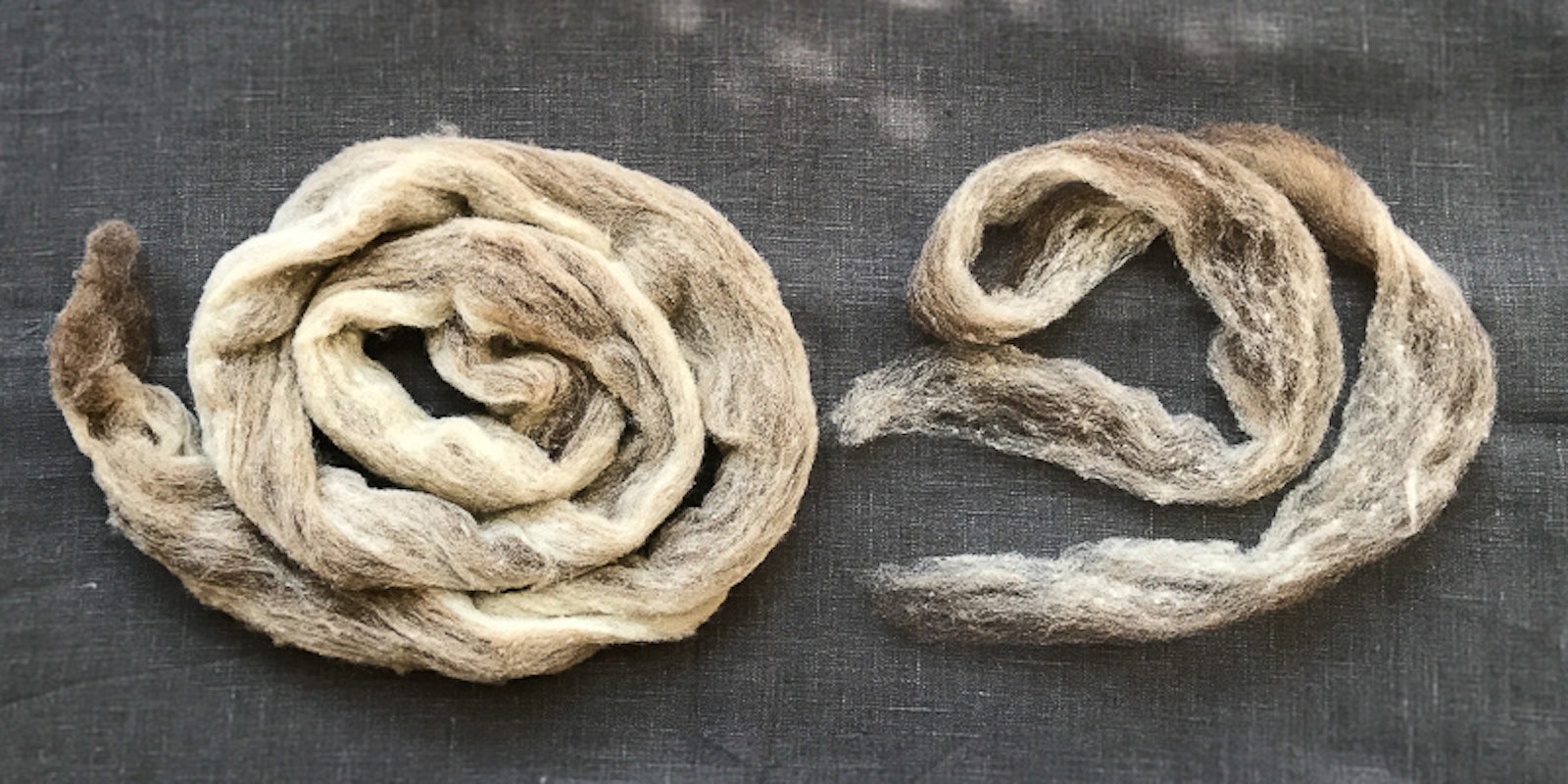I've been stash diving as summer fades to fall. Most of what settles to the bottom of my stash are fibers that I like but have a problem to be solved. Fiber fixer-uppers. The time was right to tackle a bag of noil-ridden CVM roving that has been marinating in my stash. I'll share a few strategies for navigating neps and noils next week, but first, what are they and were do come from?
What's a nep?
Common usage: (from left) noils in wool roving, neps in wool roving, and silk noils intentionally blended with wool.
Our fiber community is diverse, so terminology and usage varies. In my travels, I often hear spinners use nep and noil interchangeably to describe tangled fibers that create bumps in our yarns. Other fiber folks, such as Alden Amos in his Big Book of Handspinning, use nep to describe "wads of knotted, tangled fibers," while noil refers more specifically to "short, broken bits of fiber." Still other spinners will switch these definitions. (More on why the difference matters next week.)
The spinners among us who love texture may lament that bumps can be beautiful and noils can be used to add character and color to our handspun. However, if you are a nep-avoider, try my Three-Step Roving Check before you buy.
Where do wool neps and noils come from?
When it comes to wool, neps and noils are generally seen as a flaw during preparation, most often in fine wools. While short fibers can also result from shearing, the commercially carded rovings shown here were damaged due to tenderness (weakness) in the fleece.
It isn't uncommon for fine wools to have a tender tip that pulls off when gently tugged (white locks). Fleece with a break indicates a (possibly brief) stress period or illness (gray locks).
California Variegated Mutant (CVM) wool is usually quite fine, and in this case it was damaged during carding, creating noils. There are also occasional spots in this roving where long, strong fibers are in snarled knots. The moisture level of the fiber, the density of the fiber as it is fed through the carder, the type of carding cloth used, and other factors are all important in avoiding tangles and breakage.
If you have a very fine fleece or a tender fleece, there are two easy approaches:
1. Process it yourself. Hand processing is in most cases gentler and less likely to damage a tender fleece.
2. Send it to a mill, but ask questions. Some mills are very comfortable processing fine fibers without damage. I often send fine wools to mills that have a combing machine designed to remove neps, noils, and vegetable matter from carded roving. Check back next week for tips on what to do with the neppy roving that comes your way.
—Kate Larson
Featured Image: Neps and noils are sometimes hard to see. CVM roving on the left and the same roving pre-drafted on the right shows the short, tangled fibers more clearly.



